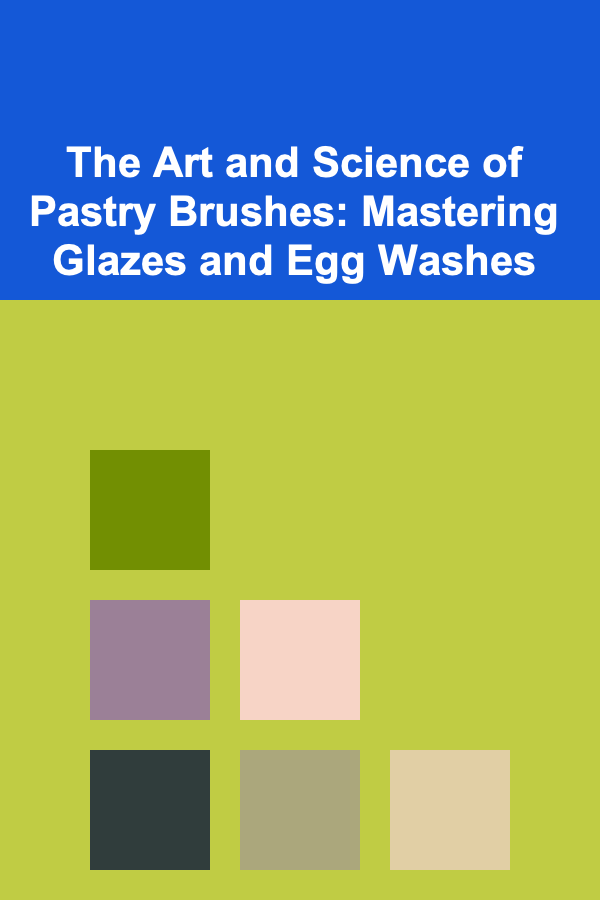
10 Tips for Revising and Refining Your Art Practice Routine
ebook include PDF & Audio bundle (Micro Guide)
$12.99$6.99
Limited Time Offer! Order within the next:
Not available at this time

Creating and refining an art practice routine is crucial for any artist looking to improve their skills, foster creativity, and produce consistent work. Whether you are a beginner or a seasoned professional, revisiting and adjusting your practice routine regularly ensures that you are always evolving as an artist. A well-structured and effective routine can help you break through creative blocks, maintain motivation, and continue progressing in your art practice.
In this article, we will explore ten essential tips for revising and refining your art practice routine to ensure it is both productive and inspiring. These tips will help you develop a balanced routine that not only nurtures your technical skills but also allows room for exploration and innovation.
Assess Your Current Practice Routine
The first step in refining your art practice is to evaluate your current routine. Are you consistently setting aside time to create? Are you focusing on the areas that will help you grow as an artist? Sometimes, we get comfortable with our routines without noticing that they have stopped serving our growth.
Take a step back and ask yourself the following questions:
- How often do I create art?
- What types of activities am I doing most in my practice? (e.g., sketching, painting, digital work)
- Am I challenging myself or sticking to what feels easy?
- How do I feel during and after my practice sessions?
By honestly assessing your current routine, you will identify areas that need improvement or adjustment.
Set Clear, Achievable Goals
Setting clear and achievable goals is essential for keeping your practice routine on track. Without specific targets, it's easy to feel lost or unmotivated, as there's no sense of direction or accomplishment. Break your goals into short-term and long-term objectives to keep yourself on course.
For example:
- Short-term goals: "I want to improve my figure drawing by practicing 15 minutes of gesture drawing daily."
- Long-term goals: "I want to complete a full portrait series by the end of the year."
Make sure that your goals are measurable and specific so you can track progress. Writing them down and revisiting them regularly can help you stay focused.
Build Consistency into Your Routine
One of the most important aspects of a successful art practice routine is consistency. While it's tempting to think that creating art only requires inspiration or a burst of creativity, it's the small, consistent efforts that lead to improvement over time. Even if you can only dedicate 20-30 minutes a day to practice, consistency will help you stay engaged and make incremental progress.
Consider:
- Setting a fixed time each day for your practice.
- Creating a designated space where you can create regularly.
- Using a calendar or planner to track your daily practice sessions.
Even on days when you don't feel particularly inspired, simply showing up and spending time on your craft is a win.
Diversify Your Practice Techniques
While consistency is important, it's equally important to avoid getting stuck in a creative rut. If you find yourself repeating the same exercises without any sense of challenge or growth, it might be time to diversify your practice techniques. Experimenting with new styles, mediums, or techniques can help you develop a broader skill set and uncover new creative possibilities.
For example:
- Try experimenting with different mediums (watercolor, charcoal, digital tools, etc.).
- Explore different art styles (realism, abstract, surrealism).
- Challenge yourself with unfamiliar subjects or compositions.
A bit of variety can reignite your creativity and expand your artistic boundaries.
Focus on Technical Skill Development
While creativity is important, honing your technical skills is a key part of an artist's journey. Strengthening your ability to execute your ideas through better craftsmanship will make a significant difference in the quality of your work. Dedicate time in your routine to practice fundamental techniques, such as:
- Drawing basics (proportions, perspective, shading)
- Color theory and composition
- Working with light and texture
It's easy to get distracted by exciting projects, but ensuring that your technical foundation is strong will give you the confidence and ability to tackle more complex challenges.
Allow for Creative Exploration
Creativity thrives when given the freedom to explore and experiment. While structure and technique are crucial for growth, it's equally important to allow yourself space to explore new ideas, methods, and concepts. Creative exploration can lead to breakthrough moments, and it allows you to have fun with your practice.
Try these to foster creative exploration:
- Set aside "playtime" for creative exploration where you experiment without specific expectations.
- Create studies that push your limits---try working with new subject matter or styles that you haven't explored before.
- Look for inspiration outside your usual sources: nature, literature, other artists' work, or even music.
Don't worry about the end result; the goal is to stimulate your imagination and enjoy the process.
Incorporate Feedback and Critique
Feedback is an essential part of artistic growth. Whether it comes from peers, mentors, or even self-critique, receiving feedback helps you identify areas for improvement and keeps you moving forward. Incorporating regular critiques into your practice routine will keep your work fresh and evolving.
Ways to incorporate feedback include:
- Joining an art group or community where you can receive constructive criticism.
- Seeking out a mentor or attending workshops.
- Taking time to reflect on your own work, asking questions such as: "What did I do well here? What could be improved?"
Keep in mind that feedback is meant to be constructive, so focus on what you can learn from the critique rather than feeling discouraged.
Break Down Complex Projects into Manageable Tasks
Sometimes, large projects can feel overwhelming. Whether you're working on a big painting, a series of pieces, or preparing for an exhibition, breaking down complex projects into smaller, manageable tasks can help keep you on track.
For example:
- If you're working on a large canvas, break the work down into smaller sections (sketching, blocking in colors, refining details, etc.).
- Set intermediate deadlines to help maintain momentum and track your progress.
This approach prevents procrastination and allows you to enjoy the satisfaction of completing smaller milestones along the way.
Make Time for Reflection
Reflection is an often-overlooked aspect of art practice, but it is essential for growth. Taking the time to reflect on your progress, successes, and areas of improvement allows you to adjust your routine as needed and ensures that you are always learning from your practice.
To integrate reflection into your routine:
- Keep an art journal where you can track your progress, jot down ideas, and record any observations or challenges.
- Take breaks to review your past works and assess how far you've come.
- Reflect on what worked well in your practice and what needs to be adjusted.
Reflection provides clarity and insight, which can lead to meaningful adjustments in your practice routine.
Take Care of Your Mental and Physical Health
While developing your art practice is essential, taking care of your physical and mental well-being is equally important. Artistic burnout is a real issue, and it's important to strike a balance between working hard and allowing yourself time to rest and recharge.
To support your well-being:
- Take regular breaks during practice to avoid fatigue and strain.
- Stay physically active with exercise, which can also boost creativity.
- Practice mindfulness and relaxation techniques to manage stress and maintain mental clarity.
Your art practice should be sustainable, so ensure that you are taking care of your overall health to continue creating for the long term.
Conclusion
Revising and refining your art practice routine is an ongoing process. As you grow as an artist, your routine should evolve to reflect your changing needs and goals. By regularly assessing your practice, setting clear goals, diversifying your techniques, and maintaining consistency, you can create a routine that not only improves your technical skills but also nurtures your creativity and passion for art.
Remember, there is no "one-size-fits-all" approach. The key is to find a balance that works for you, one that allows you to push your boundaries, challenge yourself, and stay inspired. By embracing both structure and freedom, you can build a practice that supports your artistic journey and fuels your growth as an artist.

How to Boost Your Hair Health Through Nutrition
Read More
How to Choose the Right Size Christmas Tree for Your Space
Read More
How to Enjoy Great Entertainment While Saving Money on Home Entertainment Systems
Read More
How to Give Feedback to Peers and Colleagues
Read More
The Art and Science of Pastry Brushes: Mastering Glazes and Egg Washes
Read More
Understanding and Completing Form 1040: A Beginner's Guide
Read MoreOther Products

How to Boost Your Hair Health Through Nutrition
Read More
How to Choose the Right Size Christmas Tree for Your Space
Read More
How to Enjoy Great Entertainment While Saving Money on Home Entertainment Systems
Read More
How to Give Feedback to Peers and Colleagues
Read More
The Art and Science of Pastry Brushes: Mastering Glazes and Egg Washes
Read More